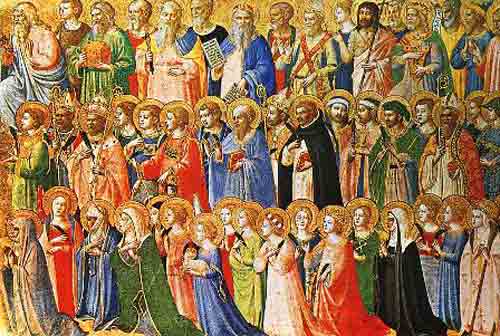What are we doing as Christians when we celebrate days on our Calendar?
In its liturgy the Church remembers and celebrates the whole drama of God’s revelation, with special focus on
– the life, death and resurrection of Jesus Christ
– the many people and events with a special place in the Scriptures and the continuing life of the Church.
These celebrations are not just a looking back into history. Their liturgical commemoration provides a way for the Church today to participate, through memory and imagination, in the work of the Holy Spirit in times past, and so be strengthened in its own life and witness.As the Letter to the Hebrews reminds us
‘With so many witnesses in a great cloud on every side of us, we too, then, should throw off everything that hinders us, especially the sin that clings so easily, and keep running steadily in the race we have started. Let us not lose sight of Jesus, who leads us in our faith and brings it to perfection…’ A New Zealand Prayer Book He Karakia Mihinare o Aotearoa page 3
When on Liturgy’s facebook page I mentioned the remembering, 70 years on, that Florence Li Tim-Oi was the first woman to be ordained a priest in the Anglican Communion, some of the reactions included:
being the first woman to be ordained does not make you saint. This is clearly the feminist agenda at its worst and what with the red stole, martyrdom? … I know she was persecuted by the Communists etc but it does not make you a saint. I think the feminist dominated North American church has done this for political reasons
For NZ Anglicans, no “saint’s day” is compulsorily required to be celebrated.
We include in the Calendar the names of people whose lives and work give special encouragement to others of all ages, and to those engaged in various aspects of the Church’s life and witness. They are not all from remote history.
Modern times have also produced men and women whose lives have excited other people to sanctity and deeper discipleship. A New Zealand Prayer Book He Karakia Mihinare o Aotearoa page 11
As well as these recognised by the wider church, we can have “Commemorations of people of local significance whom the community wishes to celebrate.” (page 11).
The Standing Commission on Liturgy and Music of the Episcopal Church is seeking feedback on proposing a new approach to commemorations tentatively entitled A Great Cloud of Witnesses. The approach appears similar to some of what I have quoted above, “Those people found in this volume are not all definitively declared to be saints but are Christians who have inspired other Christians in different times and places…The calendar in “A Great Calendar of Witnesses” does not purport to be a definitive collection of saints but rather an additional calendar of optional commemorations that represent the breadth of the Christian family story. [For those interested, it is worth reading further]”
My own addition to the discussion includes that the semi-continuous reading patter of the Daily Eucharistic Lectionary should be broken as little as possible. This is by far the greatest daily reading discipline with the scriptures. Amongst those I know who follow a discipline of daily Bible reading, this is the reading system that is most used. As we follow this daily discipline we are united with Christians around the world and across denominations. It is perfectly possible to celebrate a person on the calendar alongside prayerfully reading the scripture readings set for the Daily Eucharistic Lectionary. This is far better than constantly skipping around the scriptures reading lessons that obscurely or thematically, concordance-chosen-style connect with the person of the day.





“We include in the Calendar the names of people whose lives and work give special encouragement to others of all ages, and to those engaged in various aspects of the Church’s life and witness. They are not all from remote history.”
Thank you for this, Bosco. I take encouragement from the names of a large number of people who appear in our “Holy Women Holy Men” calendar, including, Thomas Gallaudet (the “apostle to the deaf”), Dr. Martin Luther King Jr., Bp. Oscar Romero, the Oxford martyrs, Mother Theresa, and many others. to that list will be added very soon Nelson Mandela.
The calendar of commemorations is one of the blessings of Anglican life.
Lou,
from Sunnyvale CA, in the heart of “Silicon Valley”, a place sorely in need of spiritual and moral heroes and heroines.
In Rome, for the first five century of Christendom, no saint was commemorated out of his/her place of martyrdom. And, as all the Christians are holy, the apostles and martyrs, then confessors were called “beati” (“happy”, which we translate as “blessed”).
But step by step, there was a generalization of the saints’ day in the calendar. More and more devotions were added. And all this was made by lay people.
In the fall of the first millennium started the phenomena of “elevation of the relics” (local official recognizing), then, in the beginning of the second millennium the phenomena of “canonization” in order to refrain too much saints’ veneration by the lay people. But soon canonizations became an instrument of the top, in order to grand reconnaissance to dead Christians which were not so loved by the folk.
Now we have hopefully reached again the primary stage of saints’ veneration.